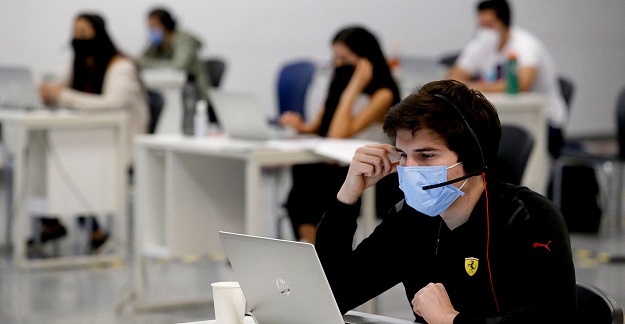Since it first appeared in Wuhan, China in late 2019, the novel Coronavirus has transformed almost all aspects of our lives. From enforced mask-wearing to physical isolation and full lockdown, the effects of the virus have gone way beyond the terrible death toll. While the world begins to look forward to a relative return to normality promised by the global rollout of vaccines, it is becoming increasingly clear that COVID may well have changed everyday life forever. Even with the promised security offered by vaccination, it seems likely many of the habits and practices we have all come to adopt through 2020/21 will remain with us long after the virus has passed – everything from the new custom of coughing into elbows to a general fear of busy, enclosed spaces.
Changes to the workplace and where education happens
Of all the aspects of life that have changed through lockdown, it could be argued how we work and learn have seen the greatest transformation. As populations around the world were forced to move online to work and study remotely from home, so a new way of mass communication and staying in touch has evolved. With many employers and employees reporting increased productivity and an improved work/life balance, an increasing number of industry experts suggest it is now highly unlikely we will ever see a mass return to the traditional office 9-5.
Educational establishments too have embraced remote video conferencing technologies, in effect broadcasting tutorials to a virtual classroom. Online learning had already been experiencing unprecedented growth over the last few years but, one day we might all look back on 2020 and consider that COVID greatly increased the speed of the shift. Many experts suggest the virus accelerated the adoption of e-commerce by around five years, so it seems highly possible it will likewise prove to be the turning point for education.
The role of improving technologies
Only just a few years ago, online learning (and working remotely) faced considerable hurdles. Not only was there are general reticence to move systems and practices online, dated technologies and, in particular, prohibitively slow connection speeds hampered the growth of learning or working over the internet.
However, as software, technology, devices and networks have improved (not to mention the widespread adoption of 5G connections), it has now become perfectly feasible for workers/students to be located anywhere yet still work equally well.
Couple the increasing sophistication of technology with real-time CART transcription tech that allows students anywhere, of any language or dialect, to participate in classrooms and it seems hard to see how our traditional educational establishments will ever return to how they were. There is also the not-insignificant advantages offered to those hearing-impaired students or those with similar learning disabilities.
The advantages of remote-learning for students
While some might (justifiably) argue that going to college or university is about far more than just the learning experience (socializing, growing as a person, meeting new friends, etc), there are still some undeniable advantages to be had from remote-learning for students. For a start, learners save on journey times or, if studying away from home, paying for costly accommodation. Also, they can study at a time of their own choosing, review lessons they find difficult, access online support services or schedule one-to-one appointments with lecturers.
Regardless, from the education establishments’ point of view, there are considerable cost savings to be had from not having students attend expensive premises – plus, these reduced costs mean they can offer a considerably more diverse range of subjects or even cut costs for students.
Only time will tell if COVID has indeed changed how students will learn in future, but just as with the other areas of life it has affected, it seems highly likely.

